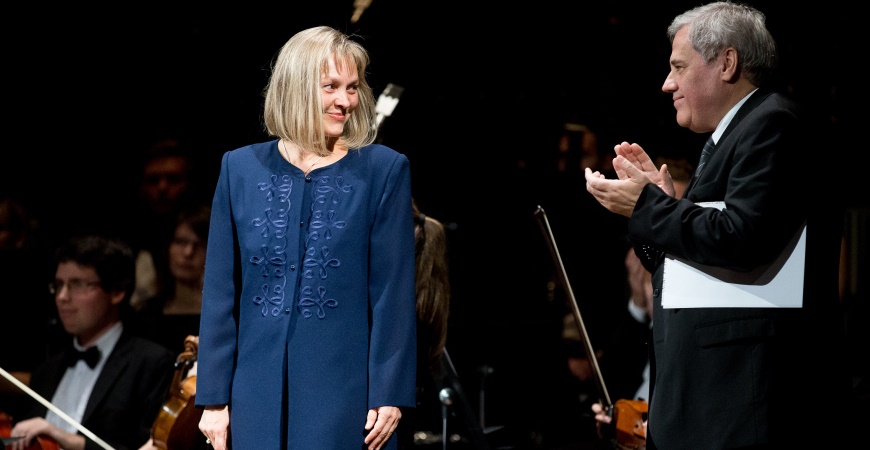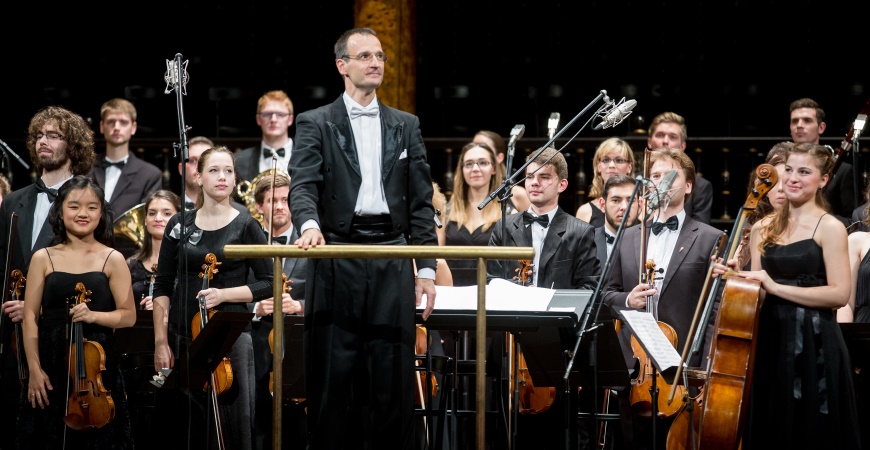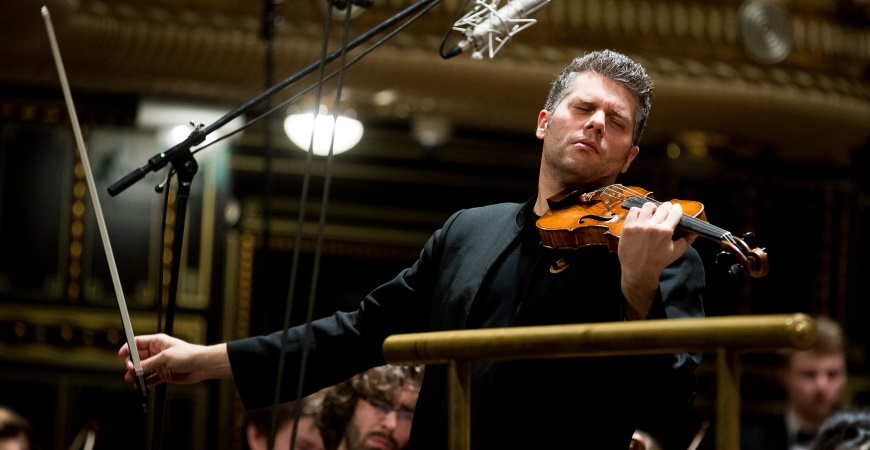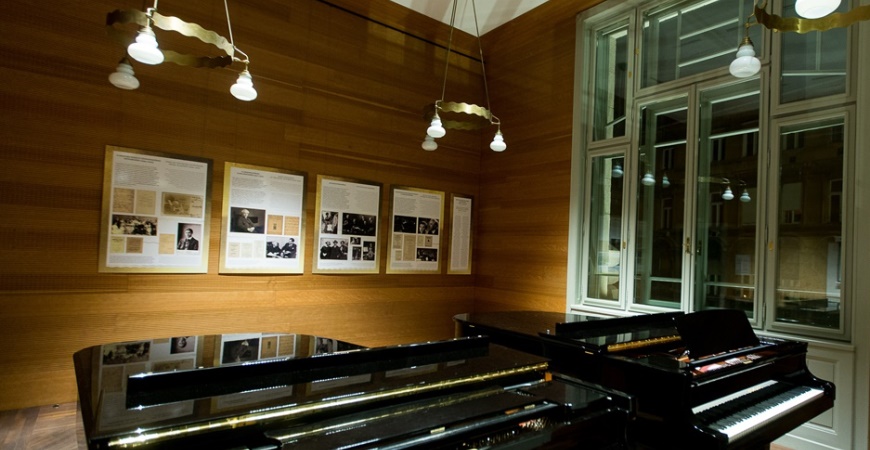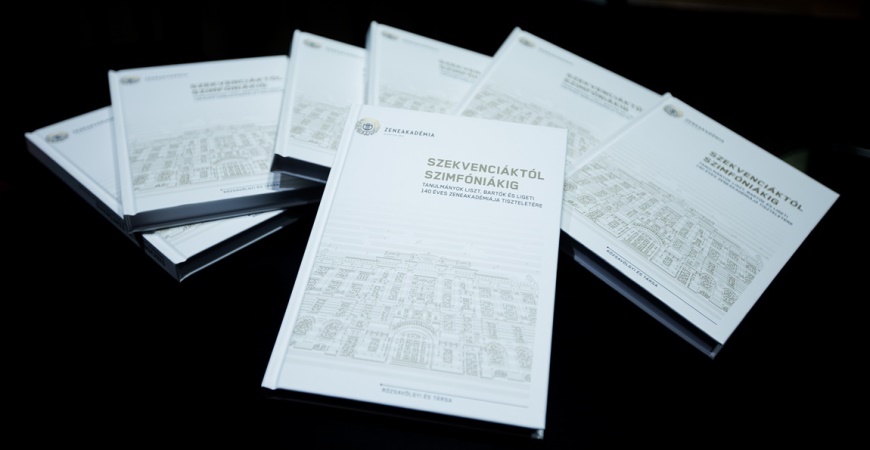Liszt Academy celebrates 140 years with gala concert
The Liszt Academy is much more than merely an institution of education, it has become a true legend. These were the words of President of the Liszt Academy Dr. Andrea Vigh prior to a celebratory concert given on the occasion of the 140th anniversary of the foundation of the academy.
Photo: Liszt Academy / Zoltán Tuba (Click to open gallery)
Andrea Vigh recalled that, according to reports, even at the opening ceremony nearly a century and a half ago there was a palpable sense of that intimate atmosphere that she, too, would so like to bring back, despite the fact that today the Liszt Academy numbers around 800 students overseen by more than 150 teachers. Even so, it is important for the Liszt Academy to be a kind of familiar home of music, with the relation between artists and audience characterized by a closeness and immediacy, she added. The president is of the belief that in Hungarians’ minds the term Liszt Academy does not represent merely an institution of education: “we capitalize the ‘Z’ (Zeneakadémia in Hungarian) because over the course of 140 years our institution has become a true legend. The current leadership is similarly working on reinforcing this status, mobilizing educational partnerships and winning over the world’s leading artists to perform at the Liszt Academy,” Andrea Vigh said, adding that they consider the detail of teaching the coming generation just as important as ‘global successes’.
Photo: Liszt Academy / Zoltán Tuba (Click to open gallery)
In his speech, recently appointed president of the Friends of the Liszt Academy and former head of the institution András Batta quoted Ferenc Erkel: “One reason for the Liszt Academy is that there should be at least one place in Hungary where harmony plays the principal role.” He reminded his audience that the Liszt Academy “has over past years received a great deal”: it was reborn thanks to an investment of HUF 14 billion, thus today it is unique globally both in terms of its content and infrastructure. András Batta said there was a genuine circle of friends of the Liszt Academy, formed 122 years after the institution was launched and which since then had supported projects of the academy to the tune of more than HUF 200 million.
Photo: Liszt Academy / Zoltán Tuba (Click to open gallery)
President of the Republic János Áder and Barnabás Lenkovics, President of the Constitutional Court, also attended the Liszt Academy concert. Gergely Ménesi conducted the Symphony Orchestra of the Liszt Academy (Zoltán Kocsis was unable to be present due to illness); their performance featured one work each from four of the most influential teachers of the academy, Liszt, Bartók, Dohnányi and Kodály. Soloist for the recital, violinist Barnabás Kelemen, paid tribute to the victims of the Paris attacks on Friday by playing Johann Sebastian Bach’s Chaconne in D minor before the interval.
Before the concert there were two short presentations. The decoration in the Bartók Room (XIV) has been completed, the first refurbishment of the several historical classrooms of the Liszt Academy. Five tableaux compiled by Dr. László Vikárius, professor of musicology, director of the Bartók Archive, and produced by the Communications Directorate and Chief Engineer’s Department, reveal the close links between Bartók and the Liszt Academy. The display richly illustrated with photographs, documents and quotations opens with Bartók’s student days before going on to show him as piano teacher, chamber music partner and colleague, as well as concert artist, with special focus on the legendary farewell concert in 1940. The final tableau has a list of Bartók’s academy students and even though many of his leading students took classes from him privately, the roll call is still impressive, said László Vikárius.
Photo: Liszt Academy / Zoltán Tuba (Click to open gallery)
After the Bartók Room, the focus of attention turned to the volume published specially for the 140th anniversary. The remarkable From Sequences to Symphonies – studies in honour of the 140-year-old Liszt Academy of Liszt, Bartók and Ligeti produced in partnership with Rózsavölgyi Publishers and also available in an online version represents the research portfolio of the Liszt Ferenc Academy of Music, since the global institution founded by Erkel and Liszt not only plays a key role in training practising musicians but – in a way worthy of its university rank – it is also active in the area of research, being one of the very best in scientific life in Hungary and Europe. Hungary’s only Department of Musicology started in 1951 (at the urging of Kodály); today, a PhD programme is also connected with it. The Church Music Department restarted a quarter of a century ago and under the leadership of László Dobszay, as well as the 30-year-old Liszt Memorial Museum and Research Centre operating in the Old Academy of Music, similarly have research profiles of world repute. The eleven studies by the cream of the Liszt Academy’s scientific workshops (including a professor emerita, former and current department heads, teachers, researchers and PhD students) draw their inspiration from nearly 1000 years of the history of Western music, and without exception all the authors cherish close links to their alma mater. Editor Gergely Fazekas said that the entire 240-page volume can be downloaded from the Liszt Academy website.
Photo: Liszt Academy / Zoltán Tuba (Click to open gallery)
The illumination of the main facade of the building was also completed for this special moment. The most advanced LED lighting and floodlights – some of which are recessed on the building itself, while others are located in candelabras on Liszt Ferenc Square – were switched on by Dr. Andrea Vigh at an unorthodox press briefing two days earlier. From now, each evening they illuminate the principal, Liszt Ferenc Square, facade of the Liszt Academy as well as the Király and Dohnányi Streets sides of the building. To learn more about the latest concerts and season ticket series of this jubilee season reaching its high point, click here.
Liszt Academy / MTI



